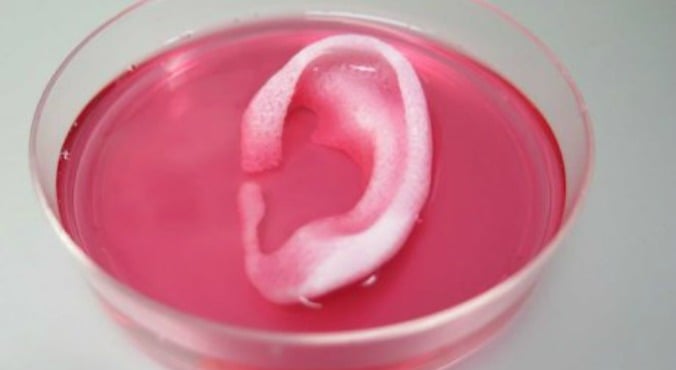
Image: ABC
Scientists have demonstrated the first 3D printer able to produce living and structurally stable bone, cartilage or skeletal muscle tissue big enough to be used for human transplants.
Inorganic bone replacements are already being printed out of bone cement or titanium addition to printed prosthetic body parts, but printing of functioning, full-size tissues faces two critical problems related to size.
“The resulting constructs are often structurally unstable and too fragile for surgical implantation,” a media release said.
“Moreover, because they lack blood vessels, their size is constrained by the diffusion limit for nutrients and oxygen, which is around 200 micrometers — too small to make most human tissues and organs.”
The diffusion limit refers to how far molecules will move through living tissues once absorbed, so cells further than 200 micrometers (0.2 millimetres), from a blood vessel or other source of nutrients will starve and die.
The new printer, known as the integrated tissue-organ printer or ITOP, is described in a paper published this week in the journal Nature Biotechnology by researchers from the Wake Forest Institute for Regenerative Medicine in North Carolina.
ITOP tackles the problem of structural integrity by printing a biodegradable plastic structure onto which living cells are applied using a water-based gel ink.
The problem of keeping the cells oxygenated and fed was solved by building microchannels into the structural plastic so nutrients and oxygen can reach all cells.